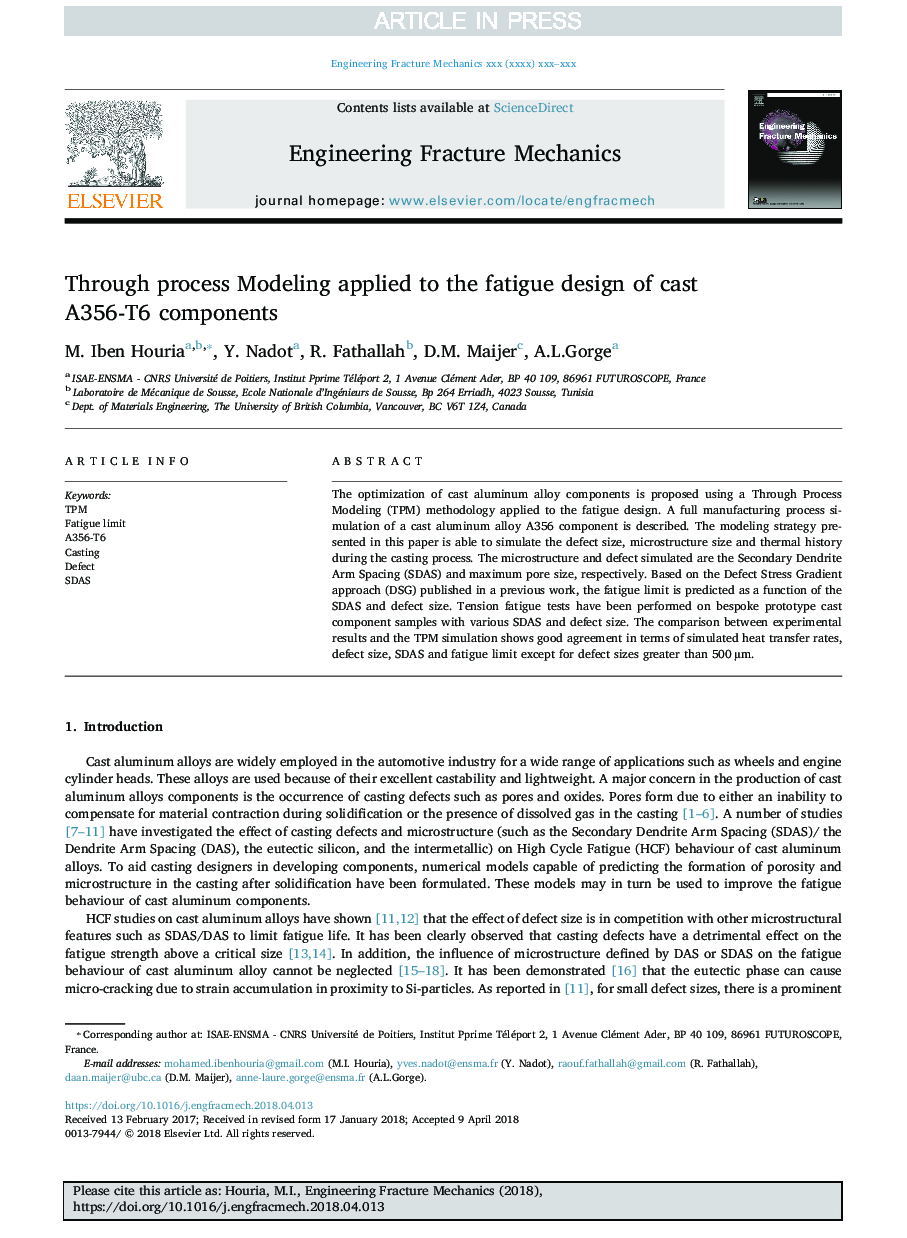| Article ID | Journal | Published Year | Pages | File Type |
|---|---|---|---|---|
| 7168856 | Engineering Fracture Mechanics | 2018 | 12 Pages |
Abstract
The optimization of cast aluminum alloy components is proposed using a Through Process Modeling (TPM) methodology applied to the fatigue design. A full manufacturing process simulation of a cast aluminum alloy A356 component is described. The modeling strategy presented in this paper is able to simulate the defect size, microstructure size and thermal history during the casting process. The microstructure and defect simulated are the Secondary Dendrite Arm Spacing (SDAS) and maximum pore size, respectively. Based on the Defect Stress Gradient approach (DSG) published in a previous work, the fatigue limit is predicted as a function of the SDAS and defect size. Tension fatigue tests have been performed on bespoke prototype cast component samples with various SDAS and defect size. The comparison between experimental results and the TPM simulation shows good agreement in terms of simulated heat transfer rates, defect size, SDAS and fatigue limit except for defect sizes greater than 500â¯Âµm.
Keywords
Related Topics
Physical Sciences and Engineering
Engineering
Mechanical Engineering
Authors
M. Iben Houria, Y. Nadot, R. Fathallah, D.M. Maijer, A.L.Gorge A.L.Gorge,
